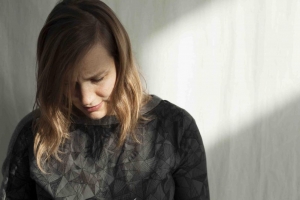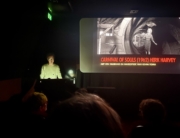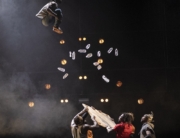
Dance Dialogue
Choreografe Keren Levi in dialoog met Igor Dobricic over de stand van de danskritiek. Wat moet een 21e eeuwse criticus in zijn/haar mars hebben om fatsoenlijk inhoudelijk te kunnen oordelen over dans, volgens de maker?
A letter from Keren
Auteur: Keren Levi
Gericht aan: Igor Dobricic
The development of any artistic discipline demands out of the critic to acknowledge artists and works of art that set to observe and question existing norms and conventions. As every experiment, also a ‘failed’ one, is valuable since it proposes one way or another new knowledge, this quality has to become an essential criteria in the evaluation of the work.
I have presented my work as a choreographer in The Netherlands for more than ten years. My experience in receiving critique is varied as my work has been a subject for both positive and negative views. To an extend I was not as bothered about the issue of critique till recently, when I had to deal with some of the critique that was written about my latest work. It is never pleasant to receive bad critique but in my experience it is as unpleasant to receive poorly conceived and carelessly written critique. One can argue that a critique of this sort can only insult its own writer. But in my opinion it also reflects on more general tendencies which call for reexamination of the function of art critique and the role of the critic. Inclinations such as the mixing between ‘reviews’ and ‘critique’, the star-marks system, the out of context, sensational titles, the thinning discourse and above all uninformed and out of touch writers, should become a cause for worry not only for artists who might end up caught in their elusive net, but for anyone who has a heart for the arts. In the face of what seems to be the inevitable end of printed media, with all its merits and faults, the approach towards the writing of art critique has to be reevaluated, in relation to its regarded history as well as its future potential.
Reflection
If the task of the critic is to judge the work of art, then she must employ a reflective attitude. One can argue whether the demands concerning the making of art can be compared with the work of critique writing. Yet the critic has to keep in mind that both processes (creation and judgement) request a similar level of attention and care. The critic has to engage herself in the work out of this fundamental acknowledgment, or in other words to actually give it a thought. As any judge obliged to do, concluding a verdict carries a huge responsibility that has to be embodied in the writing process as well as in the text itself.
Grounding
The critic has to research her subject matter and gain knowledge about the art work, the context in which the work was created and the artist herself. The critic has to be able not only to base her critique on the artistic discipline of the art work itself, but also in relation to her own individual value, belief or taste system. The critic should reveal the connection of the work to current or historical events and phenomenas, in order to situate the work in relation to its socio-political environment. When the critic is educated or specialized in other disciplines than the work of art which she sets up to judge, this information has to be communicated to the reader.
Transmission of Knowledge
Serving the reader does not only imply an authorization of a specialist in regard to the quality of the work but also furthering the knowledge of the reader about the art discipline. This means that in conversation with conventional views, the critic has to be able to offer perspectives about the art work other than standard opinions, which might include ‘inside information’ about how the art discipline operates.
Development
The development of any artistic discipline demands out of the critic to acknowledge artists and works of art that set to observe and question existing norms and conventions. As every experiment, also a ‘failed’ one, is valuable since it proposes one way or another new knowledge, this quality has to become an essential criteria in the evaluation of the work. Work of art which confirms what we already know instead of opening new horizons, even when it is well crafted, should be questioned as much as experimental work that might have not gained (yet) a final from.
I believe these considerations should construct the critics ‘must code’. I am curious, Igor, to know how do you envision the role of the critic and what is your opinion in regard to my points.




